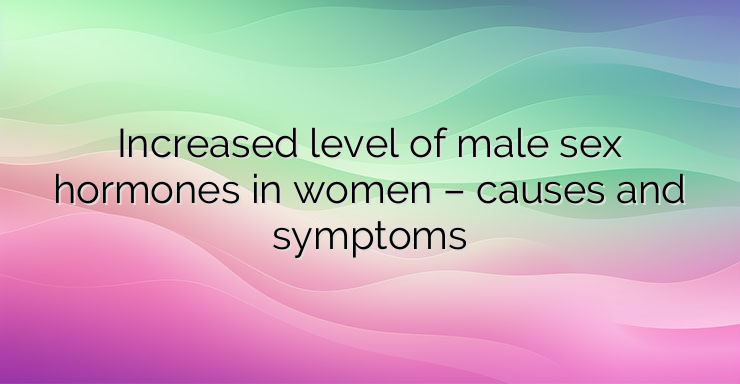Hyperandrogenism – the increased amount of male sex hormones – androgens in the blood is associated with the development of various conditions and symptoms. Some of them are: Ovarian dystrophy This condition leads to the development of polycystic ovary syndrome, which affects about 1 in 10 women. Often, the disease is detected in adolescence, when increased hair growth, severe acne are observed, or at a later age, when infertility is observed. The excess testosterone produced by the ovaries disrupts the development of the ovarian follicles, which do not mature enough to release eggs. This manifests itself in disorders of the menstrual cycle or even the absence of menstruation – amenorrhea. Congenital adrenal hyperplasia This rare genetic disease is associated with impaired regulation of the functions of the adrenal glands and is characterized in particular by overproduction of male hormones and insufficient production of cortisol, a hormone that has a key role in the metabolism of carbohydrates, lipids and proteins. In this case, hyperandrogenism is characterized by fatigue, hypoglycemia – a low blood sugar level and a drop in blood pressure. This disease manifests itself after birth, but some milder forms are also observed at an older age. Adrenal Gland Tumor Although rare, an adrenal tumor can cause excessive secretion of male hormones, but also cortisol. High levels of male sex hormones – hyperandrogenism are accompanied by hypercorticism or Cushing’s syndrome, which can be the cause of high blood pressure. Menopause The production of female sex hormones is greatly reduced, due to which the effects of male sex hormones are manifested. This leads to a disturbed hormonal balance and dysregulation of the functions of the endocrine glands, which are associated with significant signs of virilization – the manifestation of male genital marks and characteristics. Clinical examination associated with evaluation of hormone levels can confirm the diagnosis. Ultrasonography of the ovaries and adrenal glands is also a suitable approach for making the diagnosis. What are the symptoms of hyperandrogenism? Hirsutism – increased hair growth, above all, hair appears in areas of the body that are not normally hairy in women – face, chest, abdomen, lower back, buttocks, inner thighs, which can have significant psychological and social consequences; Acne and seborrhea – oily skin; Male pattern baldness, with more pronounced hair loss on the top of the scalp or temples; Disorders of the menstrual cycle, with a lack of menstruation – amenorrhea or long and irregular cycles; Enlargement of the clitoris – clitoromegaly and increased libido; Hoarseness of voice; Increased muscle mass = When very pronounced, hyperandrogenism can lead to other long-term complications: Metabolic complications: overproduction of male hormones promotes weight gain and the development of insulin resistance.This condition is therefore associated with an increased risk of obesity, diabetes and cardiovascular disease; Gynecological complications, including an increased risk of endometrial cancer. References: https://www.passeportsante.net/fr/Maux/Problemes/Fiche.aspx?doc=hyperandrogenie-exces-hormones-masculines


Leave a Reply